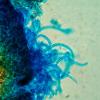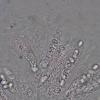
18-12-2025 21:17
Pol DebaenstThe identification took me to Byssonectria deformi

15-12-2025 07:09
 Danny Newman
Danny Newman
indet. Rutstroemiaceae sp. on unk. fallen leavesMc

19-12-2025 10:10
Patrice TANCHAUDBonjour, récolte réalisée en milieu dunaire, a

18-12-2025 17:23
 Bruno Coué
Bruno Coué
Bonjour,je serais heureux d'avoir votre avis sur c

18-12-2025 18:07
Margot en Geert VullingsThese plumes were found on rotten wood.They strong

17-12-2025 18:35
 Michel Hairaud
Michel Hairaud
Bonjour à tous/Hi to everyone I am passing along

15-12-2025 15:48
 Danny Newman
Danny Newman
Melanospora cf. lagenaria on old, rotting, fallen

15-12-2025 15:54
 Johan Boonefaes
Johan Boonefaes
Unknown anamorph found on the ground in coastal sa

15-12-2025 21:11
 Hardware Tony
Hardware Tony
Small clavate hairs, negative croziers and IKI bb
Pale Nectria on Fagus
Martin Bemmann,
29-11-2010 00:14
 Hi all,
Hi all,I know, Nectriaceae are very difficult (and that is more or less all I know about N. ;-) ). But these Nectrias maybe have some features that may allow someone of you to determin them:
I found them on a sturdy fragment (ca. 12-15 cm dm) of a Fagus trunk with whiterot, partly decorticated. Other fungi were Orbilia delicatula/leucostigma and Rhizodiscina lignyota.
The tiny (0,2 mm dm.) perithecia are embedded in a white subiculum. Colour is pale orange, older specimen are broken or collapsed. The ascus wall seems to be very thin, since it was almost unvisible to me. Spores are one to mostly two celled with a sometimes asymmetrically shape (5,3-6,5 x 3,1-4,1 µm). Paraphyses are filiform with small oildrops.
Any comments appreciated!
I will try to keep the specimens allive for further investigation.
Best regards,
Martin
PS: reminds me to nougat de Montelimar...
Christian Lechat,
29-11-2010 06:48

Re:Pale Nectria on Fagus
Hi Martin,
maybe your fungus is a Nectriopsis, it would be necessary to test the reaction in KOH.
Besides, I would like to know if the hyphae covering ascomatal wall are spinulose or smooth.
Finaly, could you make a vertical section through the ascomatal wall?
Best wishes
Christian
maybe your fungus is a Nectriopsis, it would be necessary to test the reaction in KOH.
Besides, I would like to know if the hyphae covering ascomatal wall are spinulose or smooth.
Finaly, could you make a vertical section through the ascomatal wall?
Best wishes
Christian
Martin Bemmann,
29-11-2010 22:50

Re:Pale Nectria on Fagus
Hi Christian,
thank you for your interest!
As for your question to the surface of the hyphae, they are not smooth but warty spinulose.
What do you expect, what should I observe, in KOH at what magnification? A change of colour of the perithecium?
Well a section of these very tiny fungi will be a real challenge, but I will try...
Cheers,
Martin
thank you for your interest!
As for your question to the surface of the hyphae, they are not smooth but warty spinulose.
What do you expect, what should I observe, in KOH at what magnification? A change of colour of the perithecium?
Well a section of these very tiny fungi will be a real challenge, but I will try...
Cheers,
Martin
Martin Bemmann,
30-11-2010 00:11
Martin Bemmann,
30-11-2010 00:38
Christian Lechat,
30-11-2010 06:48

Re:Pale Nectria on Fagus
Hi Martin,
according to the characters that you provide, such not changing color in KOH, ascospores size and subiculum composed of spinulose hyphal elements, I think it could be Nectriopsis oropensoides (Rehm) Samuels. You should look for in this genus to confirm possibly this hypothesis.
best whishes
Christian
according to the characters that you provide, such not changing color in KOH, ascospores size and subiculum composed of spinulose hyphal elements, I think it could be Nectriopsis oropensoides (Rehm) Samuels. You should look for in this genus to confirm possibly this hypothesis.
best whishes
Christian
Martin Bemmann,
30-11-2010 10:05

Re:Pale Nectria on Fagus
Dear Christian,
thank you very much. I don't have access to Gary Samuels description 1988. But I found the "Key to Tropical Species of Nectria-like Fungi" (Samuels/Rossman/Schroers 2002) where it is keyed:
4. Perithecial hairs cylindrical, hyphal; ascospores 5.5-7 x 2.5-3.5 µm................Nectriopsis oropensoides (Rehm) Samuels (Samuels, 1988a)
Could it be that the "paraphyses" I showed above are such perithecial hairs? Or where do I have to search them?
Regards,
Martin
thank you very much. I don't have access to Gary Samuels description 1988. But I found the "Key to Tropical Species of Nectria-like Fungi" (Samuels/Rossman/Schroers 2002) where it is keyed:
4. Perithecial hairs cylindrical, hyphal; ascospores 5.5-7 x 2.5-3.5 µm................Nectriopsis oropensoides (Rehm) Samuels (Samuels, 1988a)
Could it be that the "paraphyses" I showed above are such perithecial hairs? Or where do I have to search them?
Regards,
Martin
Christian Lechat,
30-11-2010 12:50
Martin Bemmann,
30-11-2010 13:09

Re:Pale Nectria on Fagus
Thank you very much!
The description fits well to the features I could observe. I saw as well the entry in the AscoFrance-database. The spores of this collection look more cylindrical then those in mine. But this evening I will make a new slide in CB to document the verrucous surface of the spores which is only faintly visible in my water mount.
Best regards,
Martin
The description fits well to the features I could observe. I saw as well the entry in the AscoFrance-database. The spores of this collection look more cylindrical then those in mine. But this evening I will make a new slide in CB to document the verrucous surface of the spores which is only faintly visible in my water mount.
Best regards,
Martin
Alex Akulov,
30-11-2010 21:43
Martin Bemmann,
30-11-2010 23:58
Martin Bemmann,
02-12-2010 00:17

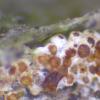

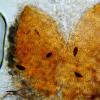


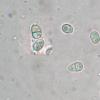
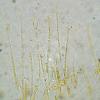



 13615.jpg
13615.jpg

